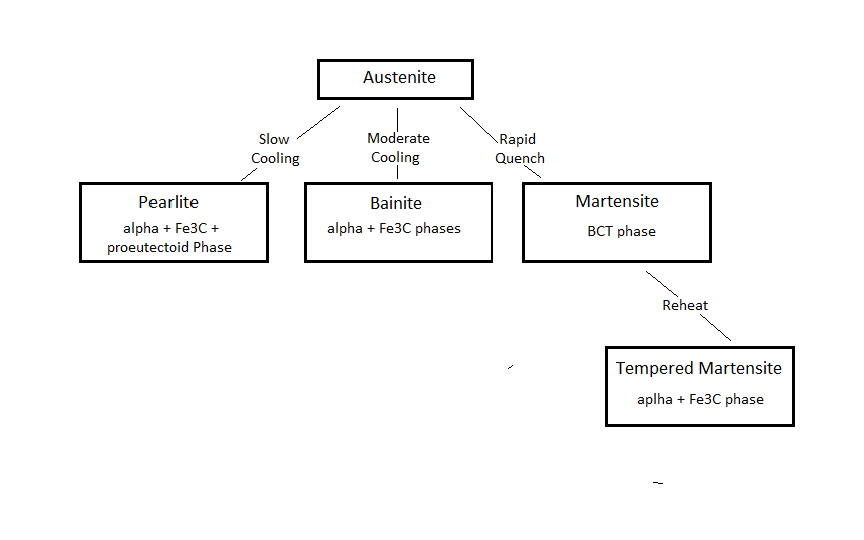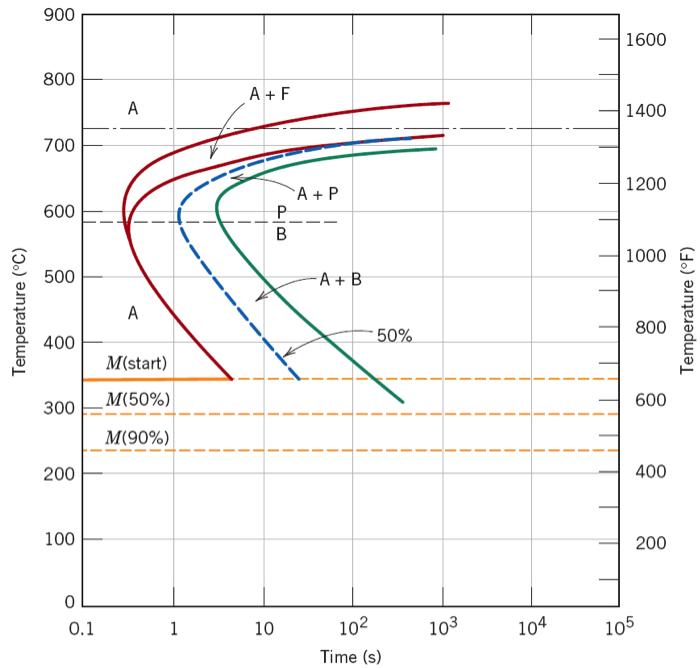Cooling Rate determines the final crystalline structure and final mechanical properties.

- Slow cooling: coarse pearlite formed with thick ferrite and cementite layers
- Increased cooling rate: lamellar thickness decreases
- Additional Increased cooling rate: Still allows formation of bainite
- Fastest cooling rates allow formation of martensite
For each chemistry a Time versus Temperature Diagram can be developed. This diagram indicates the importance of rapid cooling through the higher temperatures.

This diagram will change depending on the amount of carbon present or other alloys present. Everything should start as an austenitite structure. The dark heavy line shows the cooling curve required necessary to form 100% martensite. This is the most desirable result.
As you can see just below 600 C or 1100 F, ferrite begins to form in the austenite. If the cooling is not fast enough and the cooling moves through this area the end results will be a mixture of martensite and other crystalline structures. Some of the final properties of the pipe will be affected depending on the extent of the mixture.
The following diagram indicates how chemistry can affect Quench rate required. For rich, expensive chemistry, the quench rate does not need to be fast. But for the majority of chemistries the quench rate needs to be very fast.



